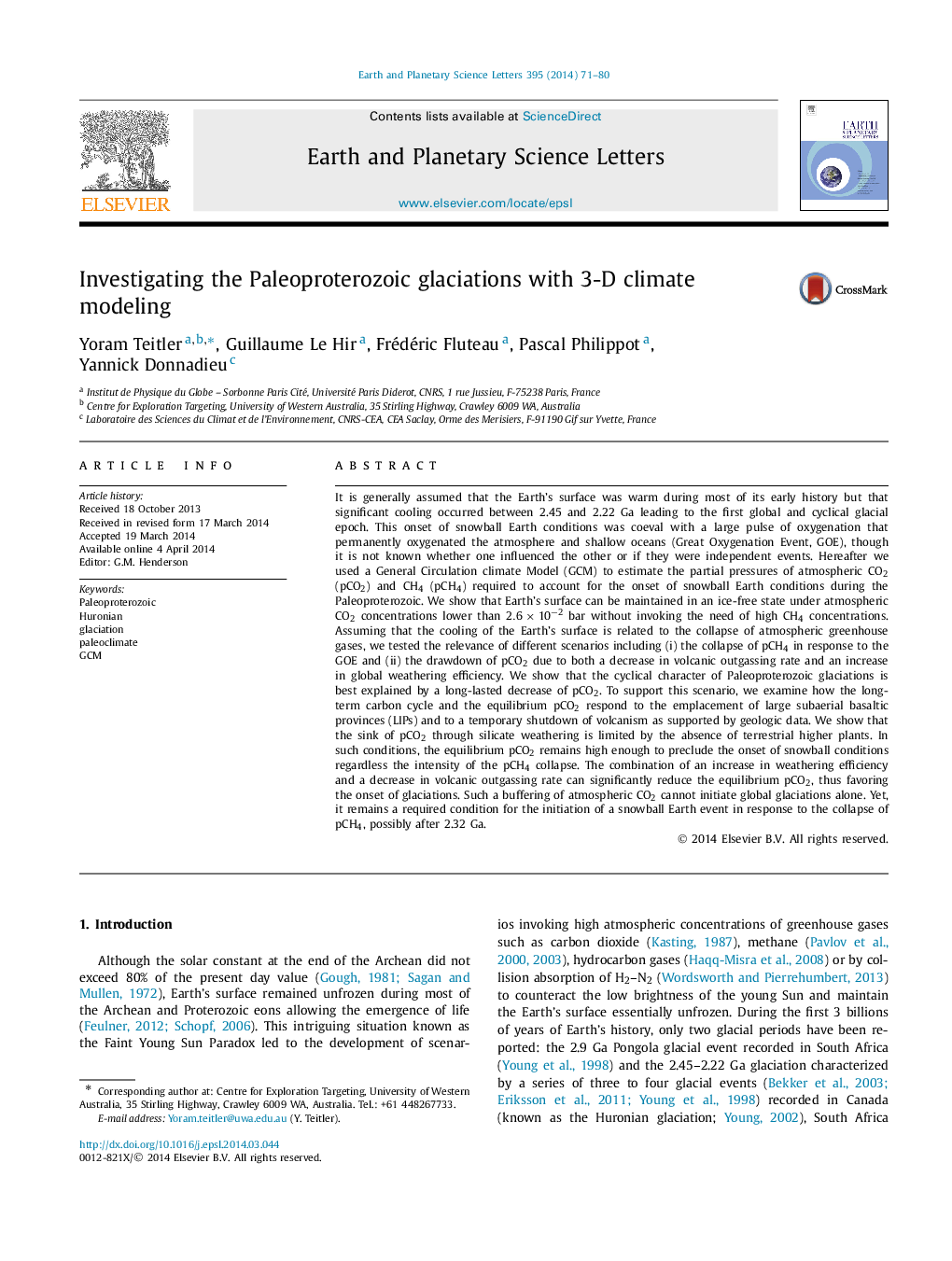| کد مقاله | کد نشریه | سال انتشار | مقاله انگلیسی | نسخه تمام متن |
|---|---|---|---|---|
| 6429257 | 1634761 | 2014 | 10 صفحه PDF | دانلود رایگان |
- Maintenance of ice-free surface on Earth at 2.4 Ga requires moderate pCO2.
- Increase in weathering efficiency favored the onset of the Huronian glaciations.
- Onset of Paleoproterozoic snowball Earth requires pCO2 buffering and pCH4 collapse.
It is generally assumed that the Earth's surface was warm during most of its early history but that significant cooling occurred between 2.45 and 2.22 Ga leading to the first global and cyclical glacial epoch. This onset of snowball Earth conditions was coeval with a large pulse of oxygenation that permanently oxygenated the atmosphere and shallow oceans (Great Oxygenation Event, GOE), though it is not known whether one influenced the other or if they were independent events. Hereafter we used a General Circulation climate Model (GCM) to estimate the partial pressures of atmospheric CO2 (pCO2) and CH4 (pCH4) required to account for the onset of snowball Earth conditions during the Paleoproterozoic. We show that Earth's surface can be maintained in an ice-free state under atmospheric CO2 concentrations lower than 2.6Ã10â2 bar without invoking the need of high CH4 concentrations. Assuming that the cooling of the Earth's surface is related to the collapse of atmospheric greenhouse gases, we tested the relevance of different scenarios including (i) the collapse of pCH4 in response to the GOE and (ii) the drawdown of pCO2 due to both a decrease in volcanic outgassing rate and an increase in global weathering efficiency. We show that the cyclical character of Paleoproterozoic glaciations is best explained by a long-lasted decrease of pCO2. To support this scenario, we examine how the long-term carbon cycle and the equilibrium pCO2 respond to the emplacement of large subaerial basaltic provinces (LIPs) and to a temporary shutdown of volcanism as supported by geologic data. We show that the sink of pCO2 through silicate weathering is limited by the absence of terrestrial higher plants. In such conditions, the equilibrium pCO2 remains high enough to preclude the onset of snowball conditions regardless the intensity of the pCH4 collapse. The combination of an increase in weathering efficiency and a decrease in volcanic outgassing rate can significantly reduce the equilibrium pCO2, thus favoring the onset of glaciations. Such a buffering of atmospheric CO2 cannot initiate global glaciations alone. Yet, it remains a required condition for the initiation of a snowball Earth event in response to the collapse of pCH4, possibly after 2.32 Ga.
Journal: Earth and Planetary Science Letters - Volume 395, 1 June 2014, Pages 71-80
